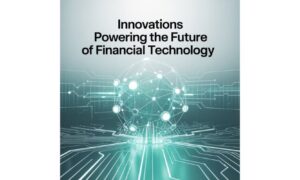Introduction
The banking sector is undergoing a revolutionary shift, propelled by the wave of digital transformation. This transformative journey is significantly shaped by the integration of Financial Technology, commonly known as FinTech, into traditional banking practices. The synergy between traditional banking and FinTech has not only streamlined operations but has also paved the way for enhanced services and improved customer experiences.
The Evolution of Banking Through Digital Transformation
The traditional banking model, characterized by brick-and-mortar branches and manual processes, is rapidly evolving. Digital transformation in banking entails the adoption of advanced technologies to optimize internal operations, meet regulatory requirements, and most importantly, cater to the evolving needs and expectations of customers.
One of the key drivers of this transformation is FinTech, a term that encapsulates a wide array of technological innovations ranging from mobile banking and artificial intelligence to blockchain and data analytics. The seamless integration of these technologies has empowered banks to offer services beyond the conventional, leading to a more agile and customer-centric industry.
Enhancing Customer Experience
Customer experience lies at the heart of the digital transformation journey in banking. FinTech solutions are instrumental in creating a more personalized and efficient service environment. Mobile banking applications, for instance, allow customers to access their accounts, make transactions, and manage finances on-the-go, providing unparalleled convenience.
Moreover, the utilization of artificial intelligence (AI) and machine learning (ML) algorithms enables banks to analyze customer behavior and preferences. This data-driven approach allows for the customization of services, from personalized product recommendations to tailored financial advice. As a result, customers feel more connected to their banks, fostering a sense of trust and loyalty.
Streamlining Internal Operations
Digital transformation is not only about improving customer-facing aspects but also about optimizing internal processes. FinTech solutions are automating mundane and time-consuming tasks, freeing up valuable resources for more strategic initiatives. Robotic Process Automation (RPA) is being leveraged to handle repetitive tasks, reducing errors and increasing operational efficiency.
Blockchain technology, another facet of FinTech, is revolutionizing the way banks handle transactions. Its decentralized and secure nature ensures transparency and minimizes the risk of fraud. This not only enhances the security of financial transactions but also expedites the entire process.
Embracing a Cashless Society
The rise of FinTech has significantly contributed to the global shift towards a cashless society. Mobile payments, digital wallets, and contactless transactions have become increasingly prevalent, offering users a more convenient and efficient way to conduct financial transactions. This shift not only aligns with changing consumer preferences but also has the potential to reduce the costs associated with cash handling for banks.
The adoption of digital currencies and central bank digital currencies (CBDCs) is also gaining momentum. These initiatives aim to provide a more secure and efficient medium of exchange, further challenging the conventional reliance on physical cash.
Addressing Regulatory Challenges
Digital transformation in banking comes with its share of regulatory challenges. As the industry adopts new technologies, regulators must ensure that these innovations comply with existing laws and standards. FinTech companies and traditional banks are working hand-in-hand with regulatory bodies to create a framework that fosters innovation while safeguarding the interests of all stakeholders.
Collaboration between banks and FinTech firms is becoming increasingly common as both parties recognize the importance of navigating regulatory landscapes together. This collaborative approach not only ensures compliance but also facilitates knowledge sharing and a faster pace of innovation.
Future Prospects and Emerging Technologies
The journey of digital transformation in banking is far from over. As technology continues to evolve, so too will the opportunities for banks to enhance their services. Emerging technologies like 5G, Internet of Things (IoT), and quantum computing hold the promise of further revolutionizing the banking sector.
The advent of 5G technology, with its high-speed and low-latency capabilities, will enable banks to provide real-time services, from instant transactions to immersive customer support experiences. IoT devices, interconnected through smart banking ecosystems, will offer customers a more holistic view of their finances and enable banks to proactively address their needs.
Conclusion
The digital transformation of the banking sector through the integration of FinTech is a journey marked by innovation, collaboration, and a commitment to providing enhanced services to customers. The evolution from traditional banking models to agile, technology-driven practices is reshaping the industry, making it more resilient and responsive to the ever-changing needs of a digitalized society.
The symbiotic relationship between traditional banking and FinTech is not just a technological evolution but a cultural shift towards a more connected, efficient, and customer-centric financial ecosystem. Embracing these changes will undoubtedly position banks at the forefront of innovation, ensuring they remain relevant and resilient in the face of an ever-evolving digital landscape.



































